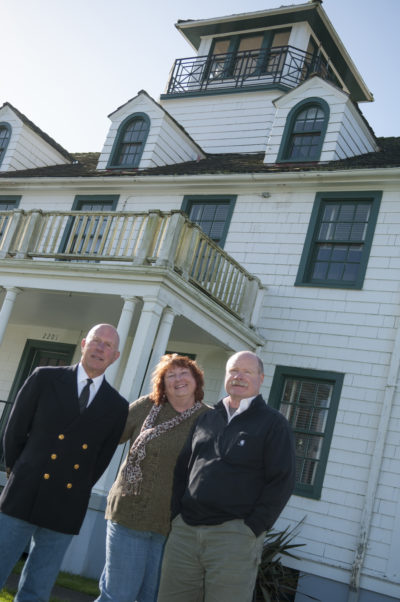 Take a lazy, 30-minute jaunt around the south side of Grays Harbor from Aberdeen to Westport and you might find yourself wandering along the water’s edge of the Westhaven Cove Marina. On the southwestern end of your walk, just past the quaint shops and diverse eateries along Westhaven Drive, you’ll find a white, New England-style, three-story structure peaked with a watchtower surrounded by a widow’s walk. That, my sea-loving friends, is the charming Westport Maritime Museum.
Take a lazy, 30-minute jaunt around the south side of Grays Harbor from Aberdeen to Westport and you might find yourself wandering along the water’s edge of the Westhaven Cove Marina. On the southwestern end of your walk, just past the quaint shops and diverse eateries along Westhaven Drive, you’ll find a white, New England-style, three-story structure peaked with a watchtower surrounded by a widow’s walk. That, my sea-loving friends, is the charming Westport Maritime Museum.
Housed in an authentic and historic Coast Guard station, the green-trimmed museum was designed to traditional Nantucket-Coast Guard Architecture Standards. The grand building shares a park-like setting with four other structures, some registered as historic buildings with the State of Washington. As much as it’s a gem to look at, it’s what’s inside that’s the greater treasure.
Exhibits do change from time to time. A new exhibit dedicated to Heroes of the Coast Guard opened Oct. 3, and is a work in progress, with new pieces added as they come in.
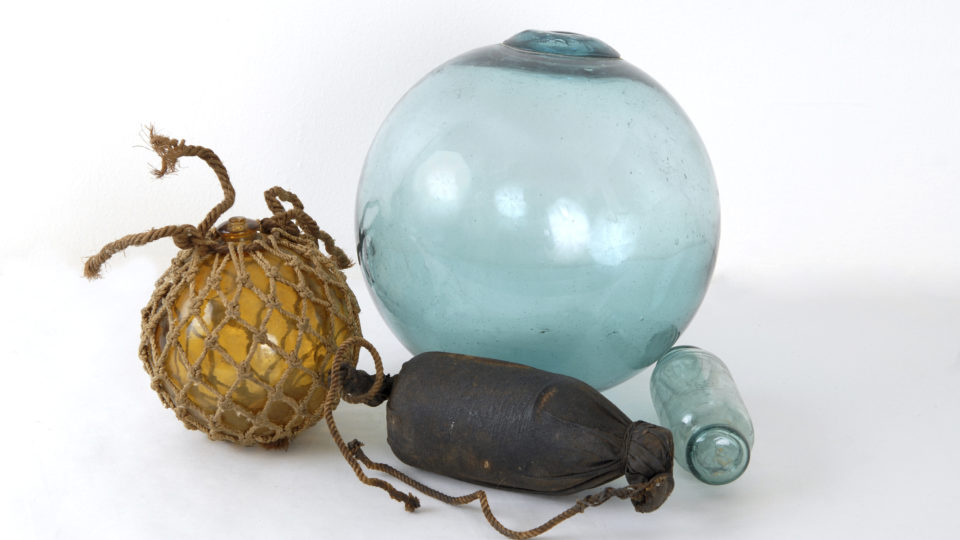 “We’re getting new stuff in regularly,” said museum director John Shaw. “We started (the museum) with just a few items and we’re adding stories as we go along.”
“We’re getting new stuff in regularly,” said museum director John Shaw. “We started (the museum) with just a few items and we’re adding stories as we go along.”
One room, particularly, is dedicated to revolving exhibits. Many, according to volunteer curator Jeff Pence, are cycled in from archived memorabilia and artifacts, some from private collections. This winter’s addition is a Duck Clubs of the South Beach display featuring collectible Pratch duck decoys. Pence said the Local Native American display will soon be expanded, with some of the new artifacts coming from his personal collection.
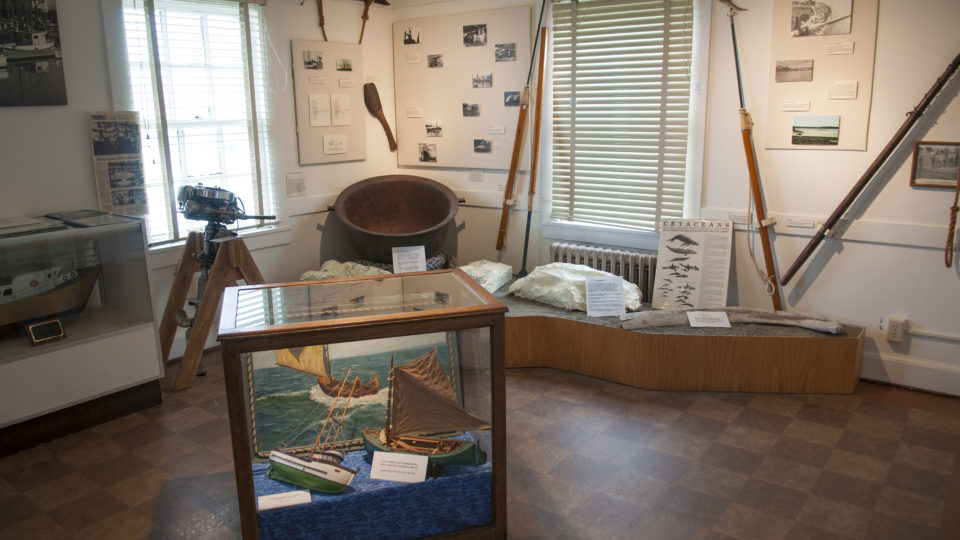 The main building, completed in 1940, once served as a U.S. Coast Guard station and was operated as Station Grays Harbor until 1972. The property was acquired by the City of Westport in 1976 and, after restoration, was leased to the Westport South Beach Historical Society starting in 1985. for use as a museum. The society is a non-profit organization dedicated to preserving and interpreting the history of the South Beach.
The main building, completed in 1940, once served as a U.S. Coast Guard station and was operated as Station Grays Harbor until 1972. The property was acquired by the City of Westport in 1976 and, after restoration, was leased to the Westport South Beach Historical Society starting in 1985. for use as a museum. The society is a non-profit organization dedicated to preserving and interpreting the history of the South Beach.
The second of the original buildings, McCausland Hall (named for longtime Seattle Post-Intelligencer cartoonist Bob McCausland), which was used as an equipment and service building by the Coast Guard, has been converted into a lecture/events hall for museum programs.
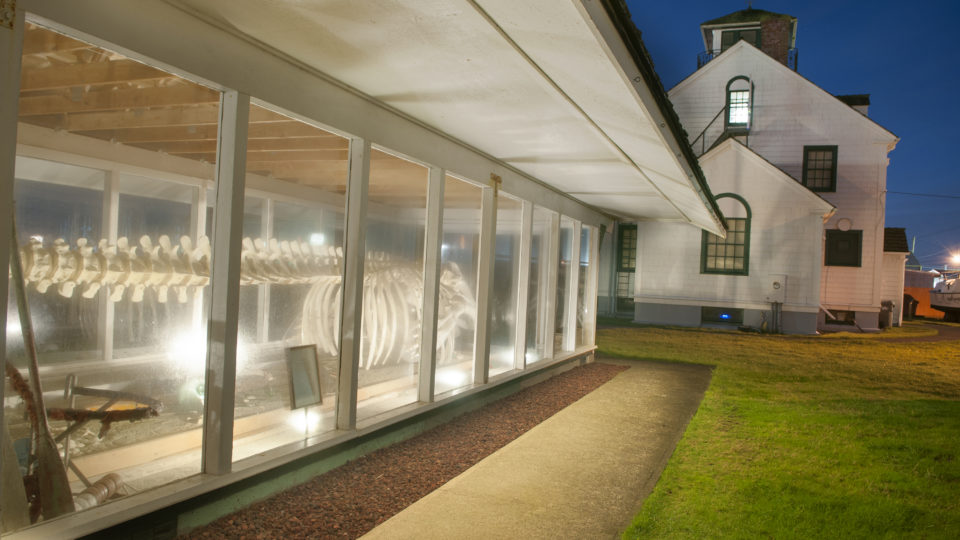 Additionally, two see-through Whale House buildings were constructed to hold the marine mammal exhibit featuring the skeletons of sea mammals, including both a minke and gray whale.
Additionally, two see-through Whale House buildings were constructed to hold the marine mammal exhibit featuring the skeletons of sea mammals, including both a minke and gray whale.
Finally, there’s the Destruction Island Lens Exhibit Hall that was added in 1998 to house the stunning, not-to-be-missed Destruction Island Lens. The Fresnel-style lighthouse lens was built in France in 1888 by Henry Le Paute from a design by Augustin-Jean Fresnel and was shipped by boat to Destruction Island, north of Westport, on the Washington Coast. The glass was installed in the island’s lighthouse in 1891 and operated until 1995 when it was removed by the Coast Guard, going on display in its present, climate-controlled location. The lovely mural on the wall behind the lens was done by Bob McCausland.
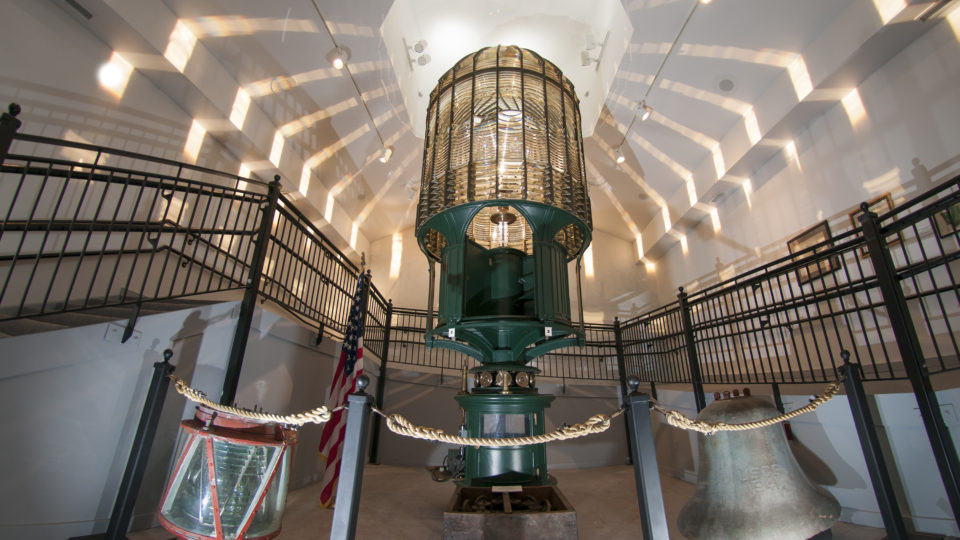
The museum is open from 10 a.m. to 4 p.m., Thursday through Monday, April 1 through Sept. 30 and noon to 4 p.m., Thursday through Monday, Oct. 1 through March 31.
The museum is closed Tuesday and Wednesday and for Christmas.
Prices are: $5 for adults,
$3 for teens (ages 13 – 18),
$2 for students (ages 6 – 12)
Children (5 and under) are free.
Active and retired military and military families (with ID) are $4, and active and retired Coast Guard personnel are free.
There is a one dollar discount per person for admission to the museum with proof of purchase from climbing the Grays Harbor Lighthouse — the tallest in the state — a short drive away.
Though tours are generally self-guided, trained and highly knowledgeable docent volunteers are frequently on hand to provide visitors with a wealth of information. You can secure a guide by reserving a discounted group tour. Call (360) 268-0078.